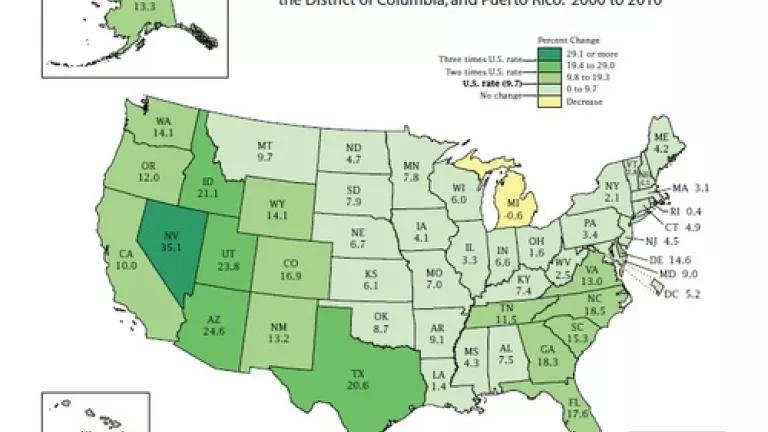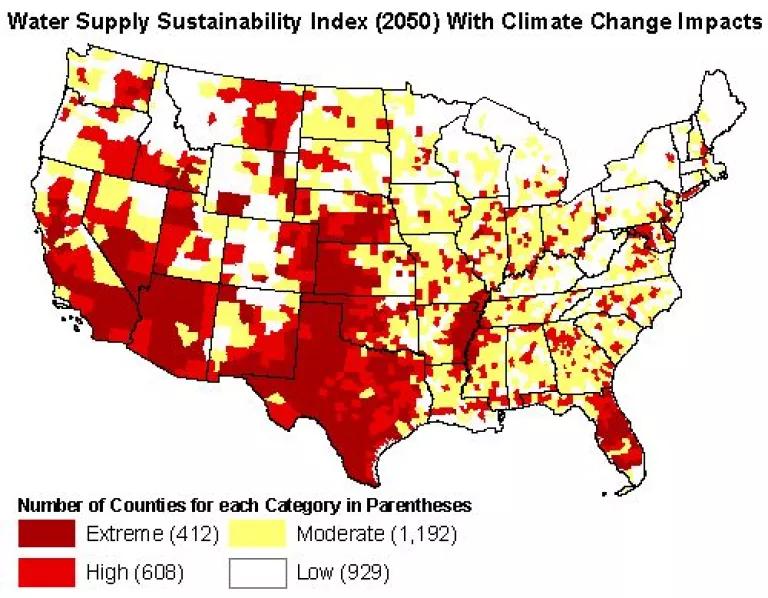
The 2010 U.S. Census results, released today, provide us with lots of new information about how America has grown in the past ten years. In particular, we can see that a great deal of that growth has taken place in the Southwest. If you rank all fifty states by rate of population growth, the top four are Nevada (35.1%), Arizona (24.6%), Utah (23.8%), and Texas (20.6%). Those rates dramatically outpace the national growth rate of 9.7%.
Unfortunately, according to NRDC’s report Climate Change, Water, and Risk, these happen to be four of the states facing a high risk of water shortages by mid-century as a result of climate change. If you look at the map that accompanied our report, you’ll see that a lot of areas within these four states are colored dark red (meaning that their water supplies are the most vulnerable).

What our report found was that, when climate change impacts are considered, 13 of 15 Arizona counties, 9 of 17 Nevada counties, 235 of 254 Texas counties, and 13 of 29 Utah counties will face an extreme or high risk of water shortages by 2050. That’s because these areas are projected to get less rainfall at the same time that water use – both agricultural and urban – is projected to increase. In other words, there won’t be enough water to go around in some of those areas.
This all means that the greatest U.S. population growth is occurring precisely where water supplies are going to be the most vulnerable over the coming years. That’s a scary thought. Fortunately, there are some things that Arizona, Nevada, Utah, and Texas can do to protect their citizens from devastating water shortages.
NRDC’s fact sheet “Climate Change and Water Resource Management” sets out some of these common sense solutions. For example, communities in vulnerable areas should focus on conservation and efficiency to make the most of precious water supplies. These communities should also begin to implement green infrastructure and low impact development practices – in other words, techniques like green roofs, rain gardens, and permeable pavement that stop rain where it falls, storing it and allowing it to filter into the ground so that it can recharge local groundwater supplies.
An NRDC report from last year found that implementing low impact development in certain areas of southern California had the potential to increase local water supplies by up to 405,000 acre-feet of water per year. That’s roughly two-thirds of the volume of water used by the entire city of Los Angeles each year. For communities that are facing the prospect of shortages – such as the four Southwest states with the fastest-growing growing populations – those water savings could mean a lot.

